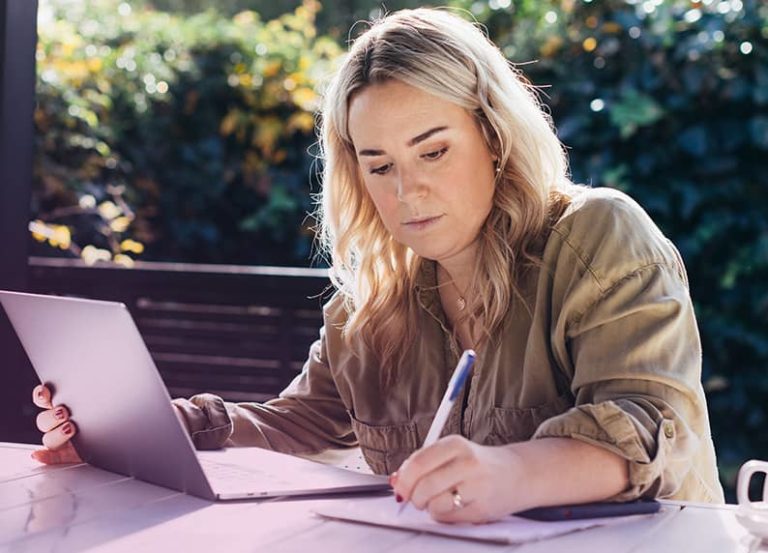NZ Borrowing Power Calculator.
Size up your mortgage borrowing potential.
How much can I borrow?
Before you get really serious about buying a home or property, you need to know how much you could potentially borrow in NZ. That figure is tied to your financial situation and the amount of debt you could comfortably service, which is why lenders ask lots of questions about your income and monthly expenses. As a warm-up to the mortgage or home loan application process, use our borrowing power calculator. It’s designed to take everything into consideration – your income, dependents, expenses and debts. Remember that we’re providing an estimate here, because your borrowing power can vary between lenders. Why not get in touch with a financial adviser to figure out how much you can afford to borrow?
What information will I need?
To make the most of our borrowing power calculator, you will need to know:
- How much income do you get? If you’re buying with a partner, you can include both incomes.
- How many people rely on you for financial support? i.e. children.
- What do you need to spend each month? For this you can use the information gathered by the budget planning calculator.
More helpful calculators.
need advice on how much you can borrow?
Get a financial adviser on your side.
If you’re trying to figure out how much you can borrow for a home loan, so that you know which houses to look at, it helps to have a mortgage adviser on your side. We can introduce you to a qualified adviser who knows the home loan market inside out. Working with an adviser is free of charge, because they’re paid by the lender you choose, so you’ve got nothing to lose.
How much will a bank lend on a property?


In New Zealand, it’s standard practice for a bank or housing finance company to lend up to 80% of the value of the property you want to buy. However, this percentage could be affected by their lending criteria and your ability to service the loan. Before you commit to buying a property, you need to have a serious talk to your lender about what they’re willing to lend you.
In some circumstances, you can borrow up to 95% of a property’s value. However, it’s obviously a riskier business for both you and the lender. If you really want to push the boat out with a big-as-possible loan, there are these things to consider:
- To service a bigger loan amount, you will need more available income. The lender will be looking closely at what’s left over each month, after your expenses.
- If you borrow more than the standard 80%, you’ll probably get charged either a low-equity premium or the cost of mortgage indemnity insurance. The lender does this to gain some protection from the risk of you getting behind on repayments.
- You might have to pay a higher interest rate for a loan that’s more than 80%. Again, the lender is doing this to balance their risk.
- It’s highly likely you’ll need a registered valuation for the property you want to buy. If it turns out the valuation is below the price you’ve agreed to pay, the lender will work with the lower figure.
How much will I need for a deposit?


As a rule, your deposit will need to be at least 20% of a property’s purchase price. This means a $200,000 deposit could allow you to pay up to $1 million for a home. However, you and your lender need to feel confident that you can afford to borrow a $800,000 mortgage.
A deposit can come from several sources. For example: your savings, KiwiSaver and possibly a gift of cash from your parents. If you need to sell an asset to get a deposit together, that’s cool too.
If you want to borrow up to 95% of a property’s purchase price, it’s likely your lender will want your deposit to be savings, rather than a gift from parents. They prefer borrowers with a good savings record.
Sources for a deposit:
- Cash – your savings or money you can find by selling an asset.
- KiwiSaver withdrawal – if you’ve been a member for at least three years, you can take out almost everything. You just need to leave $1000 in your account.
- First home grant – if you qualify, you’ll get a lump sum of up to $5,000 for an existing home or $10,000 for a new build.
- The ‘bank of mum and dad’ – parents can help you out by gifting cash, guaranteeing your mortgage or borrowing against their property.
More frequently asked questions.
This will depend on your other financial commitments. For some time now a 28/36 rule has been used. It suggests that your fixed housing costs (home loan repayments, insurance, rates) should ideally be no more than 28% of your income before tax. If you add in your other current debt repayments (loans, credit cards, store credit) it should be no more than 36% of your income before tax.
To work out each one, divide the payments total by your before-tax income over the same period. An answer of 0.28, for example, would mean 28%.
Worrying reports from late 2022 showed that new homeowners were having to spend around 50% of their before-tax income on their home loan. It had risen from a long-term average of around 37%. Although rising interest rates were contributing, the main cause was the higher property prices requiring these ‘unaffordable’ home loans.
A 10% deposit means the lender has to lend up to 90% of the property’s value. This creates a higher risk for the lender if house prices fall, compared to the usual 20% deposit and 80% home loan. That’s why the Reserve Bank limits the number of 10% deposit loans a bank can make. The lender may also charge a higher interest rate to cover their risk.
However, the percentage size of your deposit doesn’t dictate how much you can borrow in dollar terms. That depends on your ability to meet the repayments. In general, your regular fortnightly or monthly home loan repayments should be no more than about 35% of your income before tax over the same period. This assumes you have no other debts to repay.
New debt-to-income (DTI) restrictions from the Reserve Bank are expected sometime after March 2024. These might limit your total debt from all sources to something like three to six times your annual income. The actual ratio hasn’t been announced yet.
The Reserve Bank’s loan-to-value ratio (LVR) rules mean you usually need a deposit that’s at least 20% of the property’s value for a home you will live in. For an investment property it rises to 40%, however this is expected to become 35% from 1 June 2023.
Some low-deposit (high LVR) exemptions are allowed, provided you can afford the repayments.
A deposit as low as 10% (90% LVR) is allowed for a new-build property, for both owner-occupier and investor loans. However, each bank can only have 10% of their lending with low-deposit owner-occupiers and 5% with low-deposit investors. The owner-occupier allocation limit is expected to rise to 15% from 1 June 2023.
With current house prices and interest rates, your income needs to be quite high to meet the affordability criteria for a low-deposit home loan.
A deposit as low as 5% may be possible if you meet the low-income and other criteria for a Kāinga Ora First Home Loan.
This will depend on your other financial commitments. For some time now a 28/36 rule has been used. It suggests that your fixed housing costs (home loan repayments, insurance, rates) should ideally be no more than 28% of your income before tax. If you add in your other current debt repayments (loans, credit cards, store credit) it should be no more than 36% of your income before tax.
To work out each one, divide the payments total by your before-tax income over the same period. An answer of 0.28, for example, would mean 28%.
Worrying reports from late 2022 showed that new homeowners were having to spend around 50% of their before-tax income on their home loan. It had risen from a long-term average of around 37%. Although rising interest rates were contributing, the main cause was the higher property prices requiring these ‘unaffordable’ home loans.
A 10% deposit means the lender has to lend up to 90% of the property’s value. This creates a higher risk for the lender if house prices fall, compared to the usual 20% deposit and 80% home loan. That’s why the Reserve Bank limits the number of 10% deposit loans a bank can make. The lender may also charge a higher interest rate to cover their risk.
However, the percentage size of your deposit doesn’t dictate how much you can borrow in dollar terms. That depends on your ability to meet the repayments. In general, your regular fortnightly or monthly home loan repayments should be no more than about 35% of your income before tax over the same period. This assumes you have no other debts to repay.
New debt-to-income (DTI) restrictions from the Reserve Bank are expected sometime after March 2024. These might limit your total debt from all sources to something like three to six times your annual income. The actual ratio hasn’t been announced yet.
The Reserve Bank’s loan-to-value ratio (LVR) rules mean you usually need a deposit that’s at least 20% of the property’s value for a home you will live in. For an investment property it rises to 40%, however this is expected to become 35% from 1 June 2023.
Some low-deposit (high LVR) exemptions are allowed, provided you can afford the repayments.
A deposit as low as 10% (90% LVR) is allowed for a new-build property, for both owner-occupier and investor loans. However, each bank can only have 10% of their lending with low-deposit owner-occupiers and 5% with low-deposit investors. The owner-occupier allocation limit is expected to rise to 15% from 1 June 2023.
With current house prices and interest rates, your income needs to be quite high to meet the affordability criteria for a low-deposit home loan.
A deposit as low as 5% may be possible if you meet the low-income and other criteria for a Kāinga Ora First Home Loan.
Mortgage calculators give you an accurate answer based on the information you enter and the assumptions the calculator makes.
One assumption will be what happens when your initial fixed interest rate ends. The calculator will normally choose the current floating rate. That’s because there’s no way of knowing what you’ll decide to do.
The other unavoidable limitation is that calculators can only be certain about today’s interest rates or the rates you enter. Your regular repayments and the total interest paid over the life of your loan will inevitably change.
Most mortgage calculators use similar formulas to what the lenders use, so they’re a great way to get an idea of how things will be when you first take out your loan. But they’re not a financial adviser. You should always talk to an experienced specialist, like a good mortgage broker, to find the best home loan provider and structure for your circumstances and goals.
The short answer is ‘no, they don’t’. Most calculators don’t even know who you are and don’t keep the data you enter. If you’re entering information online to help a mortgage broker provide advice at your first meeting, it still won’t affect your credit score.
Credit scores are impacted by making frequent applications to lenders or credit providers. But applying for a new, similar-sized home loan every year or so is quite normal and unlikely to have any effect at all. It’s frequent applications for things like bigger home loans, credit cards, store cards, vehicle loans and personal loans that will reduce your credit score. That’s because it looks like you may not be managing your finances well.
It’s a good idea to check your credit rating from time to time. You can do it online for free, or pay a fee for an urgent response.
If you have an interest-only home loan, it’s fairly easy to do this manually. You multiply the amount you borrowed by your annual interest rate and divide the answer by 12. This will give you your monthly interest payment.
However, for most home loans the formula is quite complex. That’s because you repay some of what you owe (principal) each time, as well as paying the interest. Plus the formula makes sure your loan will be fully repaid by the agreed time.
As the balance of your loan comes down, so does the interest charged each time. Because your home loan repayments are kept the same each month (provided the interest rate hasn’t changed), the principal you’re paying back gradually increases each time. The consistent payments make it easier to budget. They also mean your home loan balance drops slowly at first, then gradually shrinks faster. As you reach the end of the loan’s term (say 25 years) your balance decreases really quickly, because you’re paying much less interest.
Mortgage calculators give you an accurate answer based on the information you enter and the assumptions the calculator makes.
One assumption will be what happens when your initial fixed interest rate ends. The calculator will normally choose the current floating rate. That’s because there’s no way of knowing what you’ll decide to do.
The other unavoidable limitation is that calculators can only be certain about today’s interest rates or the rates you enter. Your regular repayments and the total interest paid over the life of your loan will inevitably change.
Most mortgage calculators use similar formulas to what the lenders use, so they’re a great way to get an idea of how things will be when you first take out your loan. But they’re not a financial adviser. You should always talk to an experienced specialist, like a good mortgage broker, to find the best home loan provider and structure for your circumstances and goals.
The short answer is ‘no, they don’t’. Most calculators don’t even know who you are and don’t keep the data you enter. If you’re entering information online to help a mortgage broker provide advice at your first meeting, it still won’t affect your credit score.
Credit scores are impacted by making frequent applications to lenders or credit providers. But applying for a new, similar-sized home loan every year or so is quite normal and unlikely to have any effect at all. It’s frequent applications for things like bigger home loans, credit cards, store cards, vehicle loans and personal loans that will reduce your credit score. That’s because it looks like you may not be managing your finances well.
It’s a good idea to check your credit rating from time to time. You can do it online for free, or pay a fee for an urgent response.
If you have an interest-only home loan, it’s fairly easy to do this manually. You multiply the amount you borrowed by your annual interest rate and divide the answer by 12. This will give you your monthly interest payment.
However, for most home loans the formula is quite complex. That’s because you repay some of what you owe (principal) each time, as well as paying the interest. Plus the formula makes sure your loan will be fully repaid by the agreed time.
As the balance of your loan comes down, so does the interest charged each time. Because your home loan repayments are kept the same each month (provided the interest rate hasn’t changed), the principal you’re paying back gradually increases each time. The consistent payments make it easier to budget. They also mean your home loan balance drops slowly at first, then gradually shrinks faster. As you reach the end of the loan’s term (say 25 years) your balance decreases really quickly, because you’re paying much less interest.
Ready for the next step?
Once you have refined your budget and assessed your borrowing power – It’s now time to consider the type of mortgage best suited for you and your family.

Your guide to getting a mortgage
The journey from scanning the real estate pages to signing up for a mortgage has many steps. We’ll walk you through the process, so there

Types of mortgages – which one is right for you?
When you’re borrowing to buy a home or an investment property there are several different types of mortgages to choose from. Once you understand how they

